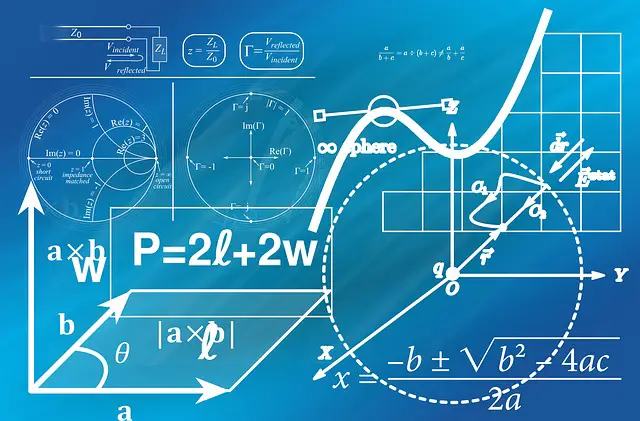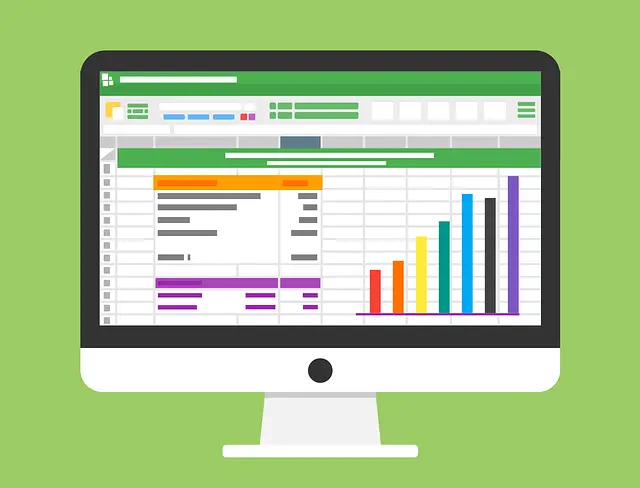Extrapolation is the process of estimating values outside the range of known data based on assumptions about the behavior of the data. Interpolation, on the other hand, is the process of estimating values within the range of known data by fitting a curve or function to the data.
What is extrapolation?
(Photo by Stephen Dawson on Unsplash )

Extrapolation is a method of estimating something beyond the range of available data. It is often used to predict future behavior or trends based on past behavior or trends. Extrapolation is sometimes also used to fill in gaps in data sets when there are no known values for the missing data points.
What is interpolation?
(Image by Gerd Altmann from Pixabay )

Interpolation is a technique used to estimate values between two known points. This can be done by using various methods, such as linear interpolation, polynomial interpolation, or spline interpolation. The estimation process typically involves creating a mathematical function that best fits the known data points. Once this function is created, it can then be used to estimate values for points that lie between the known data points.
Interpolation, is a method of estimating something based on known values that are nearby. Interpolation is often used to estimate intermediate values between two known values. For example, if you know that someone’s height is 5 feet 10 inches and their weight is 120 pounds, you could use interpolation to estimate their height at 6 feet tall.
Extrapolation Vs. Interpolation – Key differences
Definition: Extrapolation is the process of predicting or estimating values beyond the range of known data, while interpolation is the process of estimating values within the range of known data.
Data Range: Extrapolation is used when there is a need to estimate values beyond the known data range, while interpolation is used when there is a need to estimate values within the known data range.
Accuracy: Interpolation is generally more accurate than extrapolation because it is based on data points that are already known. Extrapolation, on the other hand, is based on assumptions about the behavior of the data outside the known range, which can be less reliable.
Risks: Extrapolation carries more risks than interpolation because the data used for extrapolation may not be representative of the behavior of the data outside the known range, which can lead to inaccurate predictions or estimations.
How to choose which method to use
There is no one definitive answer to this question. Some factors that you may want to consider include the nature of the data, the degree of accuracy required, the amount of data available, and the computational resources required. In general, extrapolation is more likely to be accurate when there is a clear trend in the data, while interpolation is more appropriate when the data points are more evenly spaced. However, both methods can be used in either situation.
When to use extrapolation Vs. interpolation
Extrapolation and interpolation are both useful techniques for estimating values that are not explicitly known. The choice between these techniques depends on the specific situation and the type of data being analyzed. Here are some guidelines on when to use each technique:
- Interpolation: Interpolation is most appropriate when you have a set of data points within a range and you want to estimate the values between those points. For example, if you have a time series of stock prices, you can use interpolation to estimate the price at a specific time within the known range.
- Extrapolation: Extrapolation is useful when you need to estimate values beyond the known range of data. However, it is important to exercise caution when using extrapolation because it involves making assumptions about the behavior of the data outside the known range. Extrapolation may be appropriate when you have a clear understanding of the underlying physics or other factors that govern the behavior of the data. For example, if you have data on the acceleration of a car over a short distance, you could use extrapolation to estimate its acceleration over a longer distance, assuming that the car continues to behave in the same way.
In general, interpolation is preferred over extrapolation because it is based on data that is already known and is therefore more reliable. Extrapolation should be used only when necessary and with caution, particularly when making important decisions based on the estimated values.
Examples of extrapolation
Extrapolation is often used when there is a limited amount of data available. For example, if you know that the temperature has been rising steadily over the past week, you could extrapolate that trend to estimate what the temperature will be in two weeks. However, extrapolation can be dangerous because it assumes that the trend will continue. This might not always be the case – the temperature could level off or even start to decline.
Examples of interpolation
Here are a few examples of interpolation:
- Temperature interpolation: If you have temperature readings from different locations and want to estimate the temperature at a location where a reading is not available, you can use interpolation. You can estimate the temperature at the desired location by averaging the temperatures from the nearest locations.
- Interpolation in image processing: In image processing, interpolation is often used to increase the resolution of an image. For example, if you have an image with a resolution of 800×600 pixels and want to increase it to 1600×1200 pixels, you can use interpolation to estimate the values of the missing pixels.
- Interpolation in finance: In finance, interpolation is used to estimate the yield on a bond that has a maturity date between two known dates. This is important because bond prices are sensitive to changes in yield, and accurate yield estimates are necessary for valuing bonds and making investment decisions.
- Interpolation in surveying: In surveying, interpolation is used to estimate elevations at points between known elevations. This is important for creating contour maps and for determining the slope of the terrain.
These are just a few examples of interpolation, and there are many other applications in various fields such as physics, chemistry, and engineering.
What is the difference between interpolation and extrapolation regression?
Interpolation and extrapolation are both techniques used in regression analysis to estimate unknown values based on known data. The primary difference between interpolation and extrapolation regression is the location of the estimated value relative to the known data.
Interpolation is used when the estimated value falls within the range of the known data. In other words, interpolation estimates the value of the response variable at a point within the range of the predictor variable. Interpolation is typically more accurate than extrapolation because it is based on the known data and does not require making assumptions about the behavior of the data outside the known range.
Extrapolation, on the other hand, is used when the estimated value falls outside the range of the known data. Extrapolation estimates the value of the response variable at a point outside the range of the predictor variable. Extrapolation is typically less accurate than interpolation because it requires making assumptions about the behavior of the data outside the known range, which may not always be valid.
Interpolation is used when the estimated value falls within the range of the known data, while extrapolation is used when the estimated value falls outside the range of the known data.
What is the difference between interpolation and extrapolation image?
When it comes to working with digital images, the terms interpolation and extrapolation often come up. But what exactly is the difference between these two methods?
Interpolation is a method of estimating the value of a function between two known data points. Extrapolation, on the other hand, is a method of estimating the value of a function outside of the range of known data points.
Both methods can be used to estimate values in an image. However, extrapolation is generally more inaccurate than interpolation since it relies on estimates rather than actual data. As such, it should only be used when absolutely necessary.
What are the three interpolation techniques?
There are three interpolation techniques: Linear, Quadratic, and Cubic.
Linear interpolation is the simplest technique and works by drawing a line between two known points and then extrapolating (or interpolating) along that line to find the unknown point. Quadratic and cubic interpolation are more sophisticated techniques that use higher-order polynomials to fit a curve to the data. These techniques can be more accurate than linear interpolation, but they are also more complex.
The advantages and disadvantages of extrapolation and interpolation
Extrapolation is a method of estimating something beyond the original data that was collected. This can be done by continuing a trend that is observed in the data, or by making assumptions based on known information. Interpolation is a method of estimating something based on data that falls between two known values. This can be done by using a mathematical function to fill in the gaps between the data points, or by making assumptions based on known information.
There are advantages and disadvantages to both extrapolation and interpolation. Extrapolation can be more accurate than interpolation if the trends in the data are clear and continue in a predictable way. However, extrapolation can also be less accurate if the trends in the data are not clear or do not continue in a predictable way. Interpolation can be more accurate than extrapolation if the data points are close together and there is not much variability in the data. However, interpolation can also be less accurate if the data points are far apart or there is a lot of variability in the data.
Featured Image By – 200 Degrees from Pixabay








